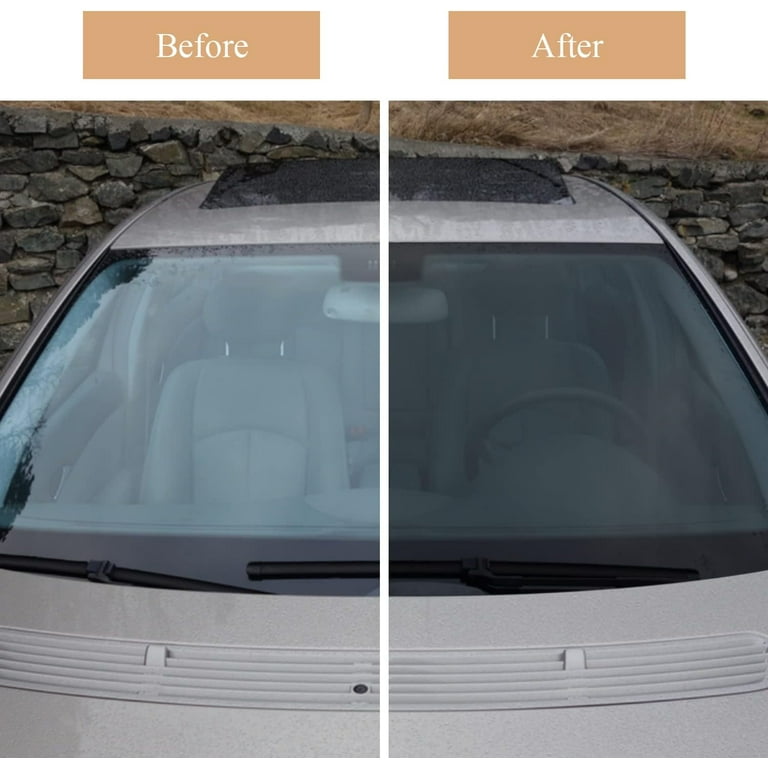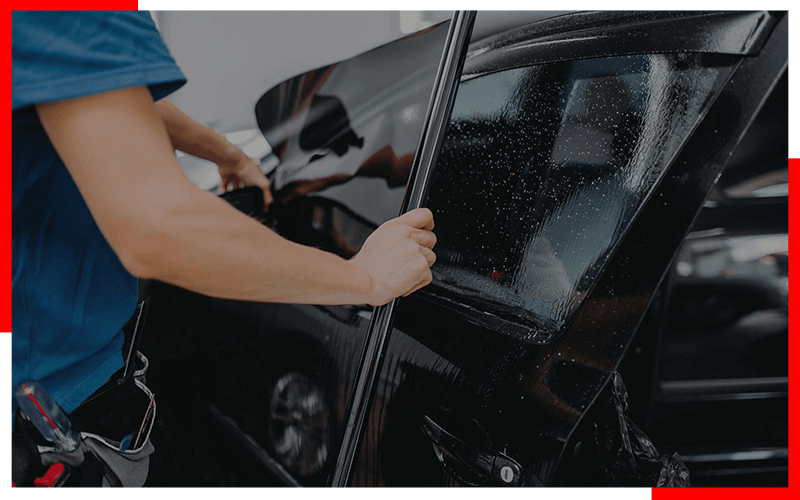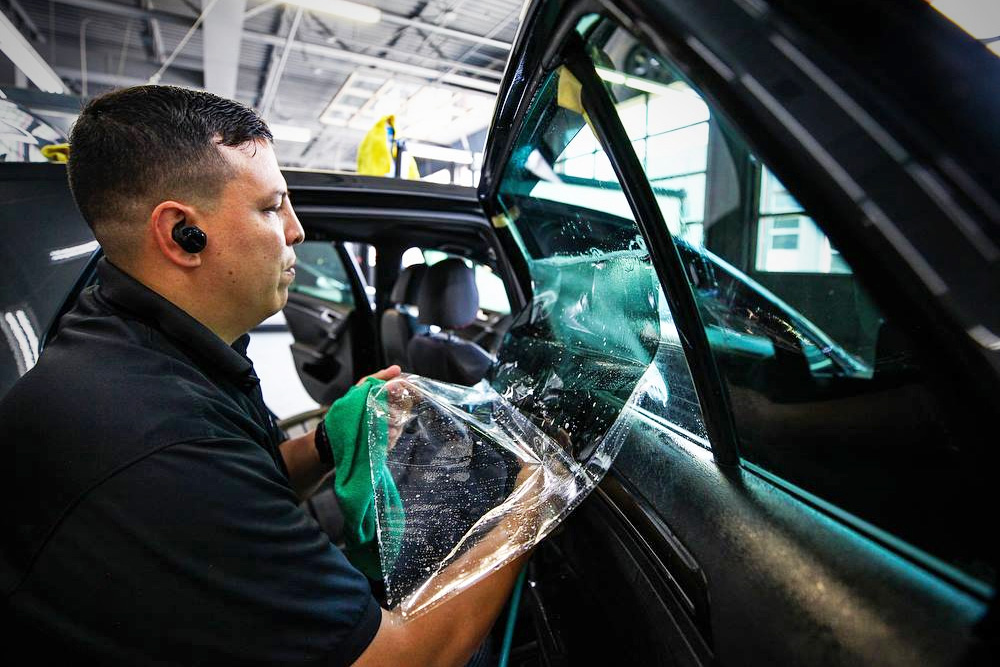Checking Out the Various Kinds Of Home Window Tint for Cars and Their Benefits

Colored Home Window Tint
Colored home window color is a popular selection amongst cars and truck proprietors looking for to enhance personal privacy and reduce glare while preserving a trendy look. This kind of color is produced by integrating dye right into the glue layer, which is after that applied to the home windows of the lorry. The key charm of dyed window color depends on its capability to provide an aesthetically pleasing look without compromising functionality.
Among one of the most considerable benefits of colored window tint is its capacity to obstruct dangerous UV rays, assisting to safeguard both passengers and the lorry's inside from sun damages. Furthermore, this tint efficiently reduces glow, contributing to a more comfy driving experience, particularly throughout intense daytime problems. The growing of window shade also includes a layer of privacy, making it a lot more tough for outsiders to see inside the car.
Nevertheless, it is vital to keep in mind that while colored window tint offers countless benefits, it might not offer as much warmth being rejected as various other types of colors. Furthermore, its long life can be impacted by direct exposure to prolonged sunshine, possibly resulting in fading with time. In general, colored home window tint stays a popular option for those focusing on appearances and basic sunlight defense.
Metalized Window Tint
Metalized home window color stands for a sophisticated option for cars and truck proprietors aiming to enhance both performance and aesthetic appeals. This sort of color includes little metallic bits that show sunlight, using a variety of advantages that interest several lorry proprietors. Among the key advantages of metalized window color is its superior heat rejection capabilities, which can considerably decrease the interior temperature of an automobile. This not just boosts convenience for travelers however likewise reduces the load on the vehicle's cooling system, possibly enhancing gas performance.
In addition, metalized tints offer raised durability contrasted to dyed movies, making them resistant to fading and scratching. This long life guarantees that the tint keeps its efficiency and look gradually, providing lasting value.
In addition, metalized window color can improve privacy and protection by making it a lot more difficult for outsiders to see inside the automobile. The reflective quality of the color can also prevent potential burglary, as valuables are much less noticeable (window tinting). While it may conflict with some electronic signals, such as general practitioner or cell phone function, the overall benefits make metalized home window tint an engaging choice for lots of car proprietors
Ceramic Home Window Color
Providing innovative technology and unequaled performance, ceramic window color has actually become a top selection for discerning automobile proprietors. This innovative film is composed of innovative ceramic particles that offer considerable warmth rejection while preserving quality and visibility. Unlike conventional tints, ceramic home window color does not rely upon metal or dye, which can disrupt digital signals from tools such as general practitioner and cell phones.
One of the standout benefits of ceramic window color is its remarkable UV security. It obstructs approximately 99% of harmful ultraviolet rays, thus safeguarding both the automobile's inside and its owners from sun damage. Furthermore, this kind of color boosts personal privacy without endangering visibility, making it a useful choice for day-to-day vehicle drivers and luxury cars alike.
Ceramic window color additionally boasts durability; it is resistant to fading and damaging, making certain long-lasting performance. Its non-reflective nature implies it does not trigger glare, contributing to much safer driving conditions (window tinting). For those seeking a costs color remedy that incorporates visual appeals navigate here with performance, ceramic home window tint sticks out as a superior choice, delivering enhanced comfort and protection when traveling
Carbon Window Color
When it involves home window tinting choices, carbon window tint has gained appeal for its mix of performance and affordability. This sort of color is composed of carbon particles, which provide a distinct matte surface that enhances the aesthetic allure of lorries. Among the primary benefits of carbon home window color is its ability to obstruct a substantial amount of harmful UV rays, shielding both the vehicle's inside and its passengers from skin damage and fading.
In addition, carbon home window color provides excellent warm rejection homes, minimizing the requirement for extreme air conditioning and improving fuel efficiency. Unlike dyed tints, carbon tints do not fade over time, preserving their effectiveness and look for years. This longevity makes them a useful selection for vehicle owners looking for long-term value.
In addition, carbon window tint is non-metalized, which suggests it does not interfere with electronic signals, making it appropriate for lorries equipped with general practitioner, Bluetooth, and other cordless modern technologies. The balance of cost, performance, and visual allure has developed carbon window tint as a favored selection for several vehicle owners. Eventually, it acts as a reputable remedy for those looking to enhance comfort while guaranteeing design.
Manufacturing Facility Color
Manufacturing facility color, additionally referred to as OEM tint, refers to the tinting that is put on car windows during the manufacturing process. This kind of tint is usually incorporated right into the glass itself, using a consistent appearance and constant levels of shading throughout all windows. The main function of factory tint is to reduce glare and enhance guest convenience while giving a level of UV security.

While manufacturing facility color provides standard advantages, it might not give the exact same degree of Related Site warmth being rejected or personal privacy as higher-grade aftermarket colors. Automobile owners looking for improved performance might take into consideration added tinting choices, while still appreciating the aesthetic allure and capability factory tint gives.
Verdict

Nonetheless, it is necessary to note Visit Your URL that while colored window color provides numerous benefits, it may not give as much warm rejection as various other kinds of tints. For those looking for a premium color solution that incorporates aesthetic appeals with functionality, ceramic window color stands out as a remarkable choice, providing boosted comfort and defense on the road.
When it comes to window tinting alternatives, carbon window tint has actually gained appeal for its mix of performance and price.Manufacturing facility tint, likewise known as OEM tint, refers to the tinting that is used to lorry windows throughout the production process. The precise degree of color can vary depending on the car supplier and model, with some automobiles including more considerable color on back windows than on front windows.